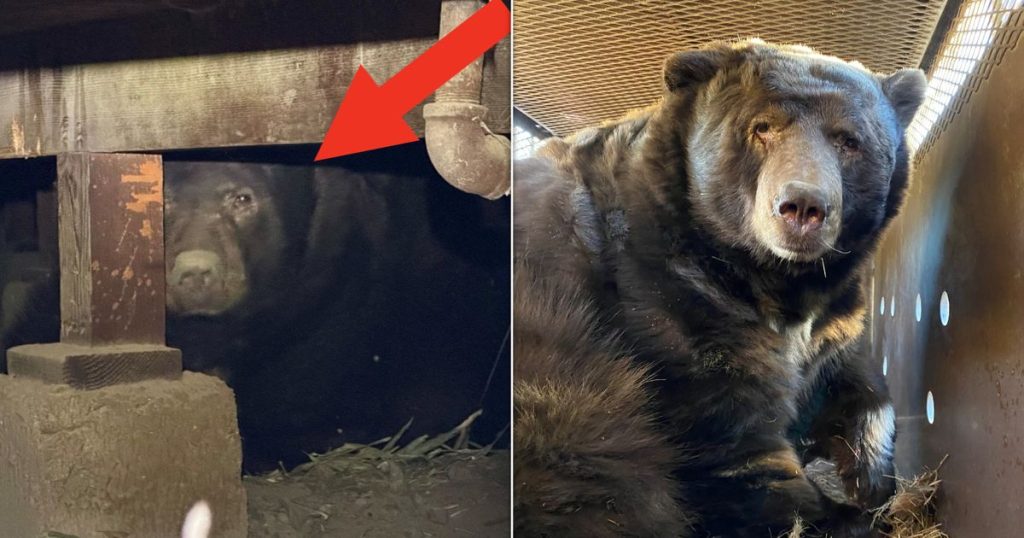A Tale of Beary: The Bear Who Found Refuge Under a House
In the heart of Altadena, California, where summer temperatures soar, a massive 525-pound male California black bear named Beary sought refuge from the heat in an unexpected place: the crawl space of a home. This unusual story unfolds with a couple, Sam Arbid and his family, who upon returning from evacuation due to the Eaton fire, discovered their unexpected housemate. Beary, a local celebrity known by several names, had made the crawl space his home, escaping the relentless heat and chaos of the wildfires.
Beary’s story begins with Sam Arbid’s first encounter upon moving into the house a couple of months prior. The bear’s presence, while surprising, was not new to the neighborhood. It was revealed that a neighbor had been feeding Beary for years, a practice wildlife experts strongly advise against. Feeding bears can diminish their natural fear of humans, leading to potentially dangerous situations for both parties. Beary’s comfort around humans, fostered by years of feeding, made him a familiar figure, though not without challenges.
The Arbid family, while initially amused by Beary’s presence, faced growing concerns. His movements under the house would occasionally disturb their dogs, creating a frenzy whenever he bumped into a pipe. This occasional commotion, while manageable, became more pressing when the family returned after evacuating from the fires. Utility workers needed access to the crawl space to restore gas services, compelling the family to think about evicting their furry tenant.
The situation took a turn when California Department of Fish and Wildlife officials stepped in to assist. Typically, bears in crawl spaces are common in the area, and experts usually advise homeowners to encourage the bears to leave on their own. However, the urgency of restoring utilities post-fire led to a collaborative effort to safely remove Beary. The plan involved a tempting feast to lure him out, showcasing the creativity and care of the wildlife team.
The process of relocating Beary was nothing short of a culinary adventure. Wildlife officials prepared a delectable spread featuring apples, peanut butter, sardines in tomato sauce, and rotisserie chicken. This irresistible meal successfully coaxed Beary out of his hiding spot and into a trap. Once secured, he was transported to the Angeles National Forest, where he underwent a welfare check and was fitted with a GPS collar to monitor his movements before being released back into the wild.
Beary’s tale highlights the delicate balance between humans and wildlife. While feeding bears may seem harmless, it disrupts their natural behavior, leading to unforeseen issues. The story concludes with a hopeful note, as Beary, now equipped with a GPS collar, roams free, allowing wildlife experts to track his journey. This heartwarming narrative serves as a reminder of the importance of respecting wildlife boundaries and fostering coexistence, ensuring both humans and animals thrive in their shared environment.









